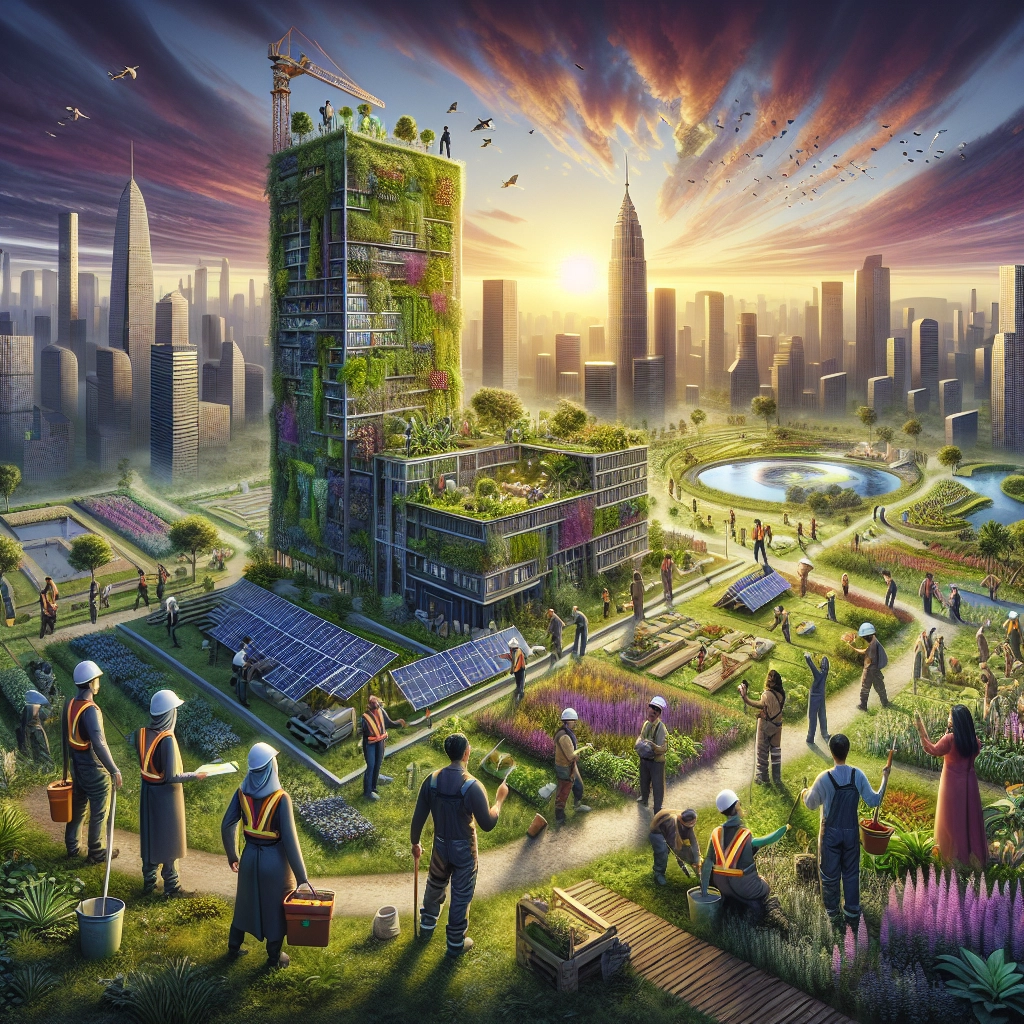
- Published on
- Authors

- Name
- ric de yuga 😄
🌱 Building Towards a Greener Future: The Shift in Construction 🌱
The construction sector has traditionally been one of the major contributors to environmental degradation, consuming vast amounts of resources and energy. However, as awareness and regulations tighten, there is a significant shift towards more sustainable practices in building construction and urban development.
Recent disruptions have shown:
- 🌲 Deforestation
- 💧 Water Scarcity
- 🏭 Pollution
These environmental challenges underscore the urgent need for construction practices that respect and preserve the natural world. But there is a visionary path forward—one that incorporates sustainability at its core through innovative techniques and technologies.
🏡 Integrating Smart Technology in Eco-Friendly Construction 🏡
Modern construction is not just about using greener materials but also about embedding intelligent systems into the fabric of buildings. Smart homes and buildings equipped with IoT technologies not only enhance comfort and convenience but also significantly reduce energy usage and environmental impact.
| Feature | Benefits |
|---|---|
| 🌞 Smart Lighting | Optimizes energy use, enhances natural light use |
| 🌡️ Intelligent HVAC | Reduces energy consumption, adjusts to occupancy |
| 💧 Water Management | Monitors usage, prevents waste |
Adopting these technologies can lead to a more decentralized approach in construction where buildings are not only consumers of energy but can also produce and store their own, making them net-positive in terms of energy consumption.
🌍 Embracing Sustainable Materials and Practices 🌍
The choice of materials in construction plays a critical role in determining its environmental impact. Innovations in sustainable materials not only reduce the carbon footprint but also enhance the efficiency and longevity of buildings:
- Bamboo and Timbercrete instead of traditional hardwood and concrete
- Recycled steel and glass
- Green insulation materials such as sheep's wool or recycled denim
These materials not only help in conserving natural resources but also in minimizing construction waste, a significant contributor to landfills.
🔨 Rethinking Design: Principles of Green Architecture 🔨
Green architecture goes beyond selecting materials—it involves a holistic approach to designing buildings that are inherently sustainable. Key principles include:
- Passive Solar Design: Utilizing the sun’s energy for heating and cooling, minimizing mechanical heating and cooling needs.
- Water Reclamation Systems: Implementing systems that recycle water for on-site use.
- Green Roofs and Walls: Integrating vegetation into buildings to improve insulation, reduce water runoff, and enhance air quality.
By embracing these principles, architects and developers can create structures that are not only energy-efficient but also harmonious with their environment.
🔄 The Circular Economy in Construction 🔄
The concept of a circular economy is becoming increasingly relevant in construction. This approach emphasizes the reuse and recycling of materials at the end of their life cycle, thus reducing waste and encouraging a continuous use of resources. Implementing modular building techniques and designing for disassembly can significantly contribute to this model, ensuring materials can be repurposed rather than discarded.
🌟 The Future of Eco-Friendly Construction 🌟
The transition towards sustainable construction requires comprehensive changes across the industry:
- 🛠️ Innovation in materials and construction techniques
- 📏 New regulatory standards focusing on sustainability
- 🤝 Collaboration among stakeholders to share knowledge and resources
The benefits of this transition are immense, not only in terms of environmental preservation but also in economic and social sustainability. Eco-friendly construction offers a pathway to reduce emissions, lower energy and resource consumption, and create healthier living environments.
As we move forward, it’s crucial that all parties involved in construction—from architects and builders to governments and consumers—commit to sustainable practices. The integration of smart technology and green principles in building design is not just a trend but a necessary evolution towards a sustainable future.
Let’s harness our collective expertise and technology to rebuild and remodel our world, not just for immediate needs but for a sustainable legacy that future generations will inherit and thank us for. Together, we can construct not just buildings, but a foundation for a sustainable future. ✨
